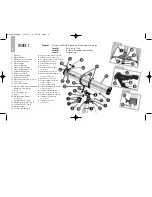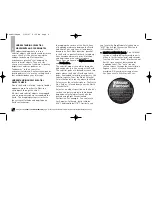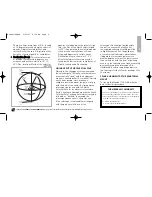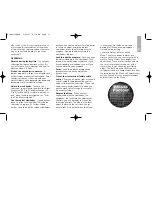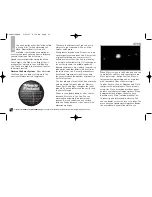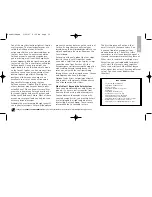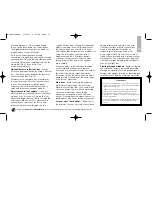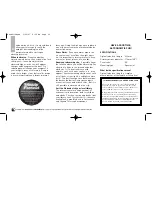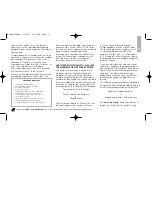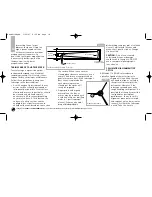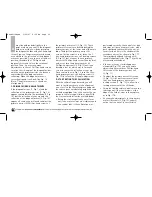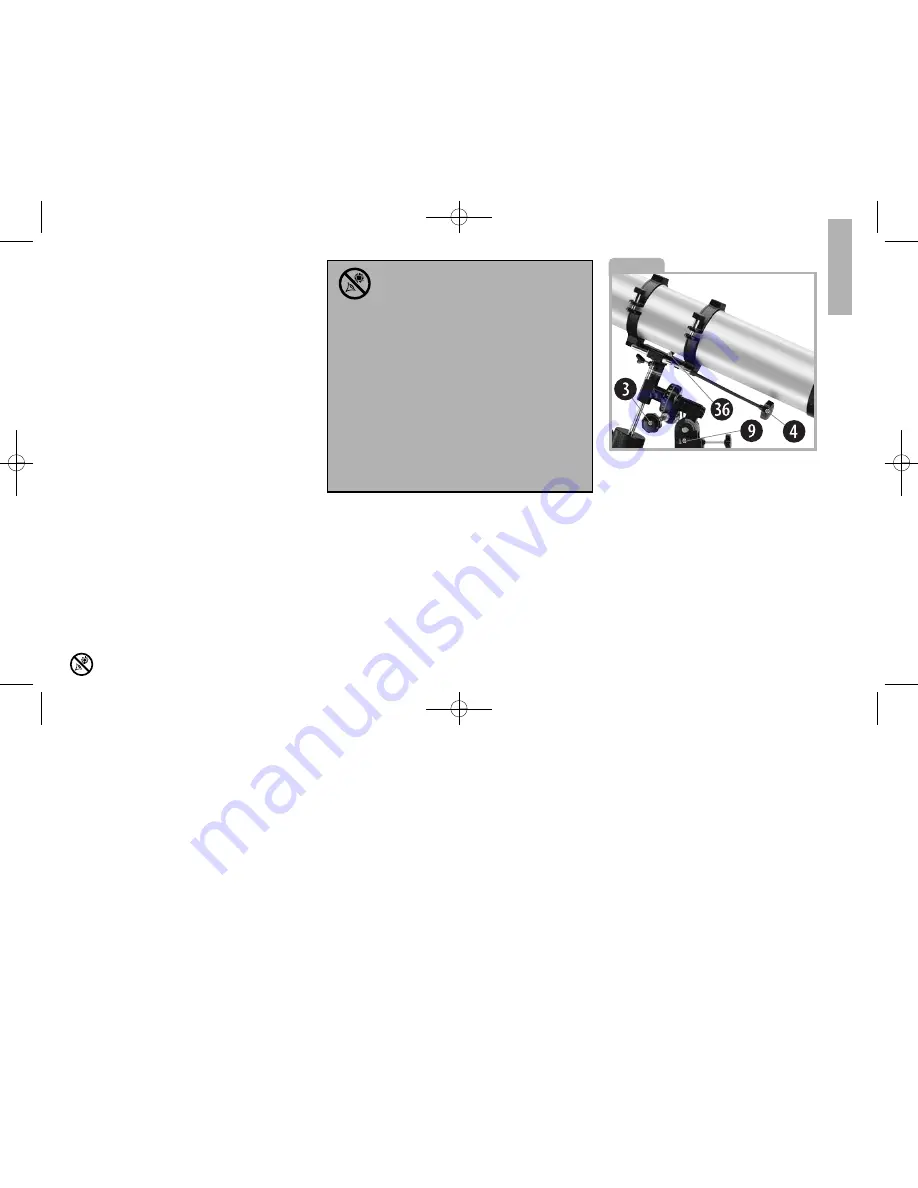
2. Tighten the cradle ring attachment lock
knob (36) to a firm feel.
ALIGN THE RED DOT VIEWFINDER
Perform the first part of this procedure
during the daytime and the last step at night.
1. Point the telescope at an easy-to-find
land object such as the top of a telephone
pole or a distant mountain or tower. Look
through the eyepiece and turn the focuser
knob (31) until the image is sharply
focused. Center the object precisely in the
eyepiece’s field of view.
2. Look through the red dot viewfinder. Turn
one or more of the viewfinder’s alignment
screws (34, Inset B) until the red dot is
precisely over the same object as you
centered in the eyepiece.
3. Check this alignment at night on a
celestial object, such as the Moon or
a bright star, and use the viewfinder’s
alignment screws to make any
necessary refinements.
SUN WARNING!
NEVER USE YOUR TELESCOPE
TO LOOK AT THE SUN!
LOOKING AT OR NEAR THE SUN WILL
CAUSE INSTANT AND IRREVERSIBLE
DAMAGE TO YOUR EYE. EYE DAMAGE IS
OFTEN PAINLESS, SO THERE IS NO
WARNING TO THE OBSERVER THAT
DAMAGE HAS OCCURRED UNTIL IT IS TOO
LATE. DO NOT POINT THE TELESCOPE OR
ITS VIEWFINDER AT OR NEAR THE SUN. DO
NOT LOOK THROUGH THE TELESCOPE OR
ITS VIEWFINDER AS IT IS MOVING.
CHILDREN SHOULD ALWAYS HAVE ADULT
SUPERVISION WHILE OBSERVING.
5
Fig. 6
thumbscrew (7) and slide the
counterweights (5) along the shaft until
the telescope remains in any given
position without tending to drift up or
down around the polar axis. Retighten
the counterweight lock (31).The
telescope is now balanced.
PREPARE MOUNT
1. Attach the flexible cables (3) and (4).
These cables are secured in place with
a firm tightening of the thumbscrews
located at the attachment ends of
each cable.
2. Tilt the polar axis of the telescope to
roughly a 45
°
angle with the horizon:
Loosen the latitude adjustment lock
(9) so you can move the mount to the
desired position.
3. Re-tighten the latitude adjustment lock
to secure the mount in place.
ATTACH THE OPTICAL TUBE TO THE
MOUNT
1. Lay the optical tube (12) with cradle rings
(14) onto the saddle plate (13).
Looking at or near the
Sun
will cause
irreversable
damage to your eye. Do not point this telescope at or near the Sun. Do not look through the telescope as it is moving.
Meade114EQAR 3/28/07 9:52 AM Page 7




